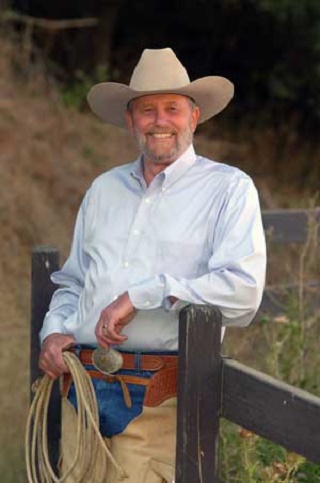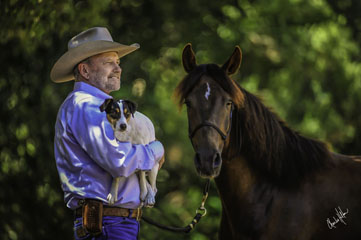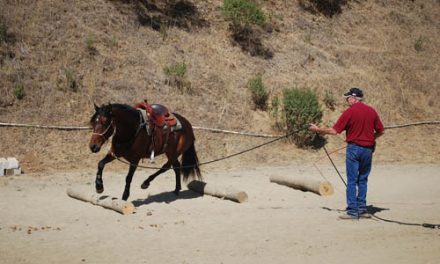
Last time I discussed the need to free our horses from stalls and barns that may collapse or burn around them and the need to identify our horses so that we can be reunited if separated. Today I want to share with you some steps you can take to prepare yourself for an emergency whether it is an immediate response such as in the case of wild fires or advanced preparedness in the case of tornados and hurricanes.
1. Have some form of identification on your horse whenever possible.
2. Make sure your horse will load quickly and willingly.
3. If possible, have a vehicle and trailer in working order to be able to evacuate.
4. Have halters and lead ropes handy for every equine on your property.
5. Have 5-10 days’ worth of feed and supplements per horse whenever possible. This is important because in a disaster, you may be displaced from your home for an extended period of time.
6. If possible, use steel water tubs and keep them full.
As I discussed last time, having identifying information on your horse is important. In my opinion either an ID leg band or ID Collar is best for identification because they are highly visible, easy to use, and you can have them prepared in advance. Putting these forms of Identification on your horse in advance will also relieve you to complete your personal preparedness in your home for the impending emergency event. See below for how to obtain additional information and order these products.
I want to specifically discuss what I think is important for those located in high fire danger areas. Precautions can be taken when there is a high wind warning notification. These are common sense suggestions and easily implemented to hasten your escape if immediate evacuation is required or necessary.
1. Hook up your truck and trailer.
2. Park it in an emergency loading position to exit as quickly as possible.
3. Keep halters and lead ropes at every stall/ corral.
4. Bring your horses in close for quick and easy loading.
5. If your horse is on special supplements or medications, have a supply loaded.
6. Fill your water tubs. Horses that survive are dehydrated and need to find water.
As a horse owner, there is another item that everyone should have and that is a well-stocked equine first aid kit. You can purchase complete kits online or you can put them together yourself. Some basic items however you might already have around your barn or can get at a local retailer. However, for Phenylbutazone (commonly known as Bute) and Flunixin meglumine (Banamine), which need to be included, you will need to obtain from your veterinarian. Once you have gathered all items, my recommendation is that they be all in one place, in a specifically marked bag or box that is easily accessed or in your trailer.
Here is a list of what most veterinarians recommend:
Thermometer
Stethoscope (cheap is ok)
Instant ice/hot pack
Bandage material
*Non-stick gauze pads
* Roll gauze
* Sheet cotton, cotton quilts or equivalent
*Standing bandages
*Vetrap
*Bandana
Scissors (blunt-tipped bandage scissors are best)
Saline Solution
Antibiotic ointment
Antiseptic was (Betadine solution, Nolvasan solutions, etc.)
Veterinarian’s information
Stud chain & twitch
Easy Boot or other hoof boot
Ichthammol
Epsom salts
Nitrofurazone, Numotizine or other poultice
Electrolyte paste
Prescription medications (used at the direction of your vet)
*Phenylbutazone(commonly known as Bute)
* Banamine (flunixin meglumine)
I want to recap some of the things we’ve discussed as to why I feel everyone should have visible Horse ID collars or fetlock ID bands as forms of additional identification during emergencies/evacuations:
- Not all areas have the proper microchip readers
- Microchip if purchased online may not be correctly registered or if you have moved, the registration may not be current.
- Original owner did not provide information that equine is microchipped
- No national government database for all brands registered in all 50 states
- Not all brands stay in the state registry
- No national government branding inspectors
- Clipping your telephone number into the side of your horse. You have to clip the entire horse or wait for it to shed for your telephone # to be removed
- Halter dog tags or using duct tape on your halter; make no sense to anyone but the owner when the halter is removed.
- Using livestock markers or sharpies on your horses side or rump; they can smear (#’s may not be readable), time consuming to remove
- Spray paint your telephone # to your horses’ side. What if you haven’t desensitized your horse to the sound, you may not be able to get your # on correctly or readable if at all; it can be time consuming
- Writing your telephone number on your horses hoof. If you have a horse with black hooves, it won’t be readable, #’s can rub off in dirt, mud or sand so they are not visible; besides who wants to be down at the horses feet when they are anxious or hyped up in a stressful or rushed situation.
- Branding the hoof; temporary, yet good for about 6 months, may be cost prohibitive, must have your farrier or other expert to do this since you do not want to damage the hoof wall.
Advantages of having Horse ID collars:
Easy to store in your barn or trailer.
Secure yet safe; breaks away with approximately 100 pounds of pressure.
Secure Identification pocket that is water resistant with embroidered information.
Quick and easy to attach with double closure hook and loop.
Can be prepared in advance.
No damage or long lasting affect to take care of or remove.
Non-abrasive.
Reusable.
A variety of sizes are available.
Versatile for other situations.
.
Fetlock ID bands:
Visible embroidery of your telephone number.
Easy to read.
Safe return to owner.
Can be safely worn 24/7.
Safe and secure to use; breaks away with approximately 32 pounds of pressure.
Attaches with a double closure hook and loop.
Life time repairs are available.
Durable.
Non-abrasive.
Knowing I have a plan of action for an emergency situation makes my life easier. You too should be prepared enough to not be that person who has to check the shelters, contact area veterinarians, rescue organization, emergency personnel or social media with pictures of your horses because you didn’t have a plan and weren’t prepared. Make it your responsibility, because it isn’t “if” it will happen to you, but rather “when” it will happen in your town or community. Just as you prepare for your family, you don’t want to be too late and have your horses become the next victims.
To obtain additional information on the products I have discussed you can request a free 26-page Emergency/Evacuation report at www.EquestriSafe.com. Being prepared may save you and your horses from becoming the next victims.
Charles Wilhelm




